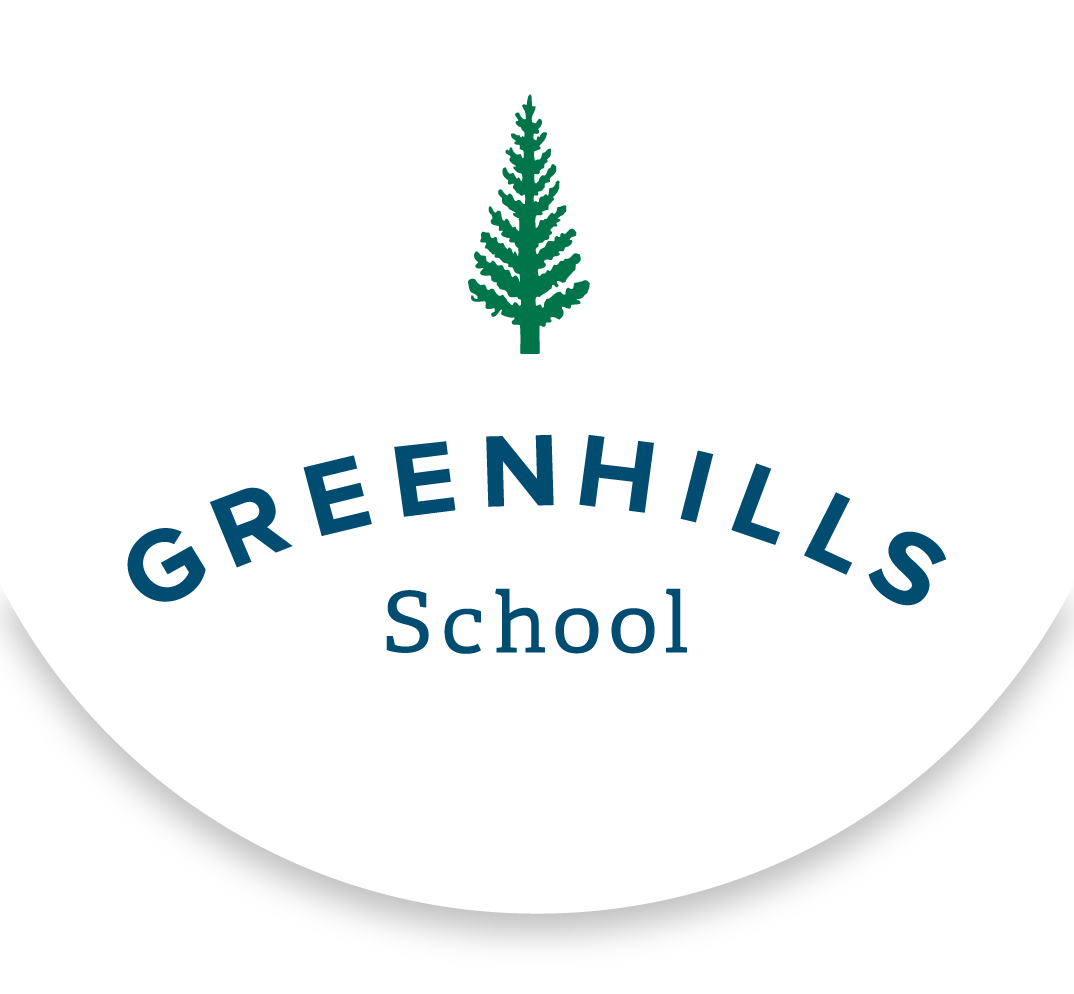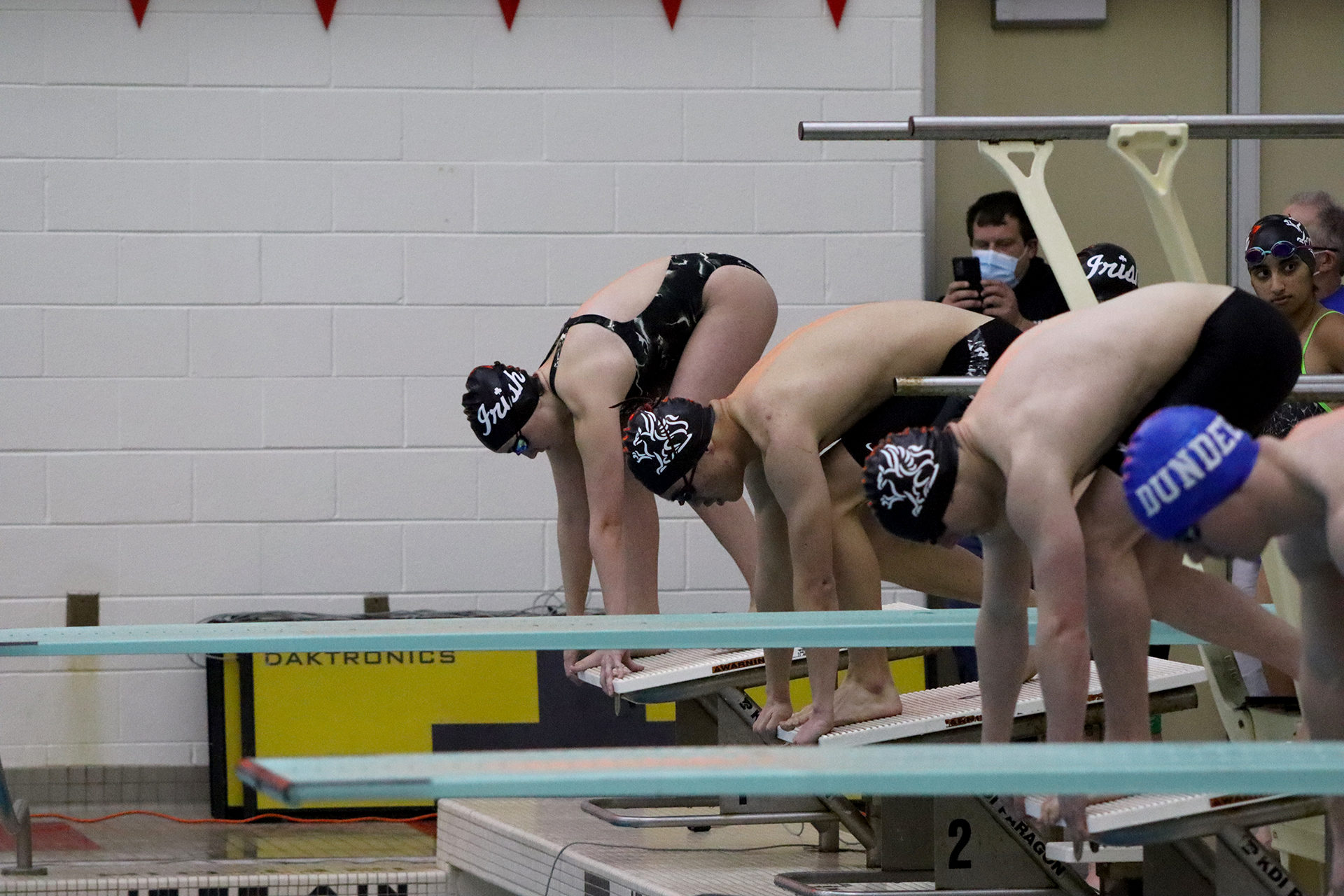A sampling of this year’s ‘interesting and entertaining’ senior projects
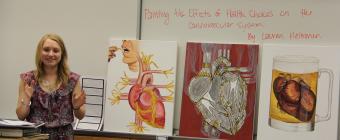
Each year, the last gasp of Greenhills seniors’ academic energy is spent on senior projects — a unique aspect of a Greenhills education that provides seniors with the opportunity to pursue a topic of interest independently.
This year’s projects culminated in an oral presentation or performance at the Senior Project Night on Thursday, May 30.
“This year’s senior projects were remarkably interesting and entertaining,” commented 12th grade class principal Bruce Zellers.
Following is just a sampling of this year’s senior projects.
Lauren Heinonen: Painting the Results of Health Choices
 According to the Center for Disease Control and Prevention (CDC), heart disease is the number one cause of death in the United States, causing 597,689 deaths in 2010 alone. A very large percentage of those deaths could have been prevented with a healthier lifestyle, as a majority of those suffering from heart disease have controllable causes and risk factors for the illness. After finding a special interest in the cardiovascular system in Anatomy and Physiology this year, as well as seeing the vast amount of cardiovascular patients at the Montreal Heart Institute last summer, I decided to combine this interest with my painting skills to create this project. My goal was to take on the challenge of creating interesting visual representations for the public eye to easily show how poor health choices can have a negative effect on the health of your heart. I chose to paint three of the most important and detrimental health choices: smoking, excessive alcohol consumption, and poor diet. These three things not only directly contribute to heart disease, but they can also contribute to diabetes, high blood pressure, high cholesterol, and obesity. This project really opened my eyes to the vast amount of deaths caused by heart disease, as well as the numerous easy ways that it can be prevented worldwide — I hope it will open your eyes, too.
According to the Center for Disease Control and Prevention (CDC), heart disease is the number one cause of death in the United States, causing 597,689 deaths in 2010 alone. A very large percentage of those deaths could have been prevented with a healthier lifestyle, as a majority of those suffering from heart disease have controllable causes and risk factors for the illness. After finding a special interest in the cardiovascular system in Anatomy and Physiology this year, as well as seeing the vast amount of cardiovascular patients at the Montreal Heart Institute last summer, I decided to combine this interest with my painting skills to create this project. My goal was to take on the challenge of creating interesting visual representations for the public eye to easily show how poor health choices can have a negative effect on the health of your heart. I chose to paint three of the most important and detrimental health choices: smoking, excessive alcohol consumption, and poor diet. These three things not only directly contribute to heart disease, but they can also contribute to diabetes, high blood pressure, high cholesterol, and obesity. This project really opened my eyes to the vast amount of deaths caused by heart disease, as well as the numerous easy ways that it can be prevented worldwide — I hope it will open your eyes, too.
John Lazarsfeld and Davis Vorva: Greenhills Community Program
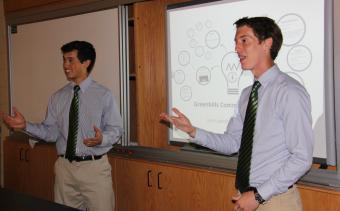 Greenhills School is comprised of two components, the Upper School and Middle School. Greenhills Community Program (GCP), our senior project, believes that the current divide between the two communities can be bridged in a way that benefits both parties. GCP is focused on establishing connections between the Upper School and Middle School to make the school a more familiar and comfortable environment for all of its students. To do this, we have designed programs to integrate students in a variety of disciplines. Our largest component is an 8th grade-11th grade collaboration program that will meet once a month for the duration of the year. We believe this will form connections between the two parts of the school while at the same time strengthening the bond between the following year’s senior and freshman classes. Additionally, we are implementing various tutoring/mentorship programs in areas such as music and foreign languages. We will be pairing younger students wanting additional practice with more experienced students who would gain community service hours. Our final section of this project is to unify Middle School and Upper School sports. We believe both programs would benefit by having two varsity athletes (on a rotating schedule) attend one middle school practice a week. We believe that, by strengthening the connections within the school, Greenhills will become a more accepting and beneficial experience for all of its students.
Greenhills School is comprised of two components, the Upper School and Middle School. Greenhills Community Program (GCP), our senior project, believes that the current divide between the two communities can be bridged in a way that benefits both parties. GCP is focused on establishing connections between the Upper School and Middle School to make the school a more familiar and comfortable environment for all of its students. To do this, we have designed programs to integrate students in a variety of disciplines. Our largest component is an 8th grade-11th grade collaboration program that will meet once a month for the duration of the year. We believe this will form connections between the two parts of the school while at the same time strengthening the bond between the following year’s senior and freshman classes. Additionally, we are implementing various tutoring/mentorship programs in areas such as music and foreign languages. We will be pairing younger students wanting additional practice with more experienced students who would gain community service hours. Our final section of this project is to unify Middle School and Upper School sports. We believe both programs would benefit by having two varsity athletes (on a rotating schedule) attend one middle school practice a week. We believe that, by strengthening the connections within the school, Greenhills will become a more accepting and beneficial experience for all of its students.
Kristen Mikhail and Elisabeth Ojo: The Power of Giving
We are both interested in future careers in the medical field. Since we are both existing organ donors and passionate about spreading awareness, we thought this was the perfect opportunity to combine our interest in medicine with our desire to demonstrate the importance of organ donation. We traveled around Michigan meeting and filming people who have been waiting for or have already received lung transplants. We interviewed the patients and listened to their experiences ranging from why they needed transplants to the differences in life after transplant. We met with three people and their families who have already received transplants, and one person who is waiting for a transplant. We also interviewed Cathy Bartos, a transplant nurse coordinator at the University of Michigan, who helped us understand the logistics behind organ transplantation. We then compiled our footage into a short documentary. This experience has allowed us to have one-on-one contact with people on the receiving end of organ donation. We hope viewing thisdocumentary will influence people to sign up to be organ donors and educate themselves further about the process of organ donation and transplantation. While meeting with transplant recipients is an inspiring experience, it was also very difficult because one of the patients we were actively corresponding with passed away while waiting for lungs. Having this happen at the beginning of our project, made us even more motivated to make a captivating presentation and effectively communicate the stories of the patients and their families.
Lalitha Ramaswamy, Florence Rivkin and Christina Bartson: A Singing Project
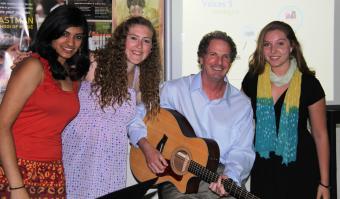 For three weeks, we learned, arranged, rehearsed, and recorded 12 cover songs into a final CD. We first had the idea for the project in October after we performed with Mr. Holland in Greenhills’ ACTivate the Cure production. Lunch jam sessions became a regular occurrence and Mr. Holland asked us if we wanted to record some of the songs we had learned. The response was a unanimous “yes!” The music selection ranges from folk to pop, with our favorite songs from the Wailin’ Jennings, Coldplay, and Adele. Although we originally planned to record in the Greenhills recording studio, in the end we constructed our own home recording studios and used a recording program called Garageband to record our songs. It turns out, live performance is much simpler than recording. We had a few road bumps. Learning the songs and creating the arrangements was the easiest part. The challenge came with perfecting the balance of our voices in a track with Garageband—the rhythm, the volume, the tune, the instrumentals, and the overall sound. At first we struggled with navigating the program, but as we became more comfortable with the basics of the controls we began experimenting with the technology. We learned we could layer our voices, allowing us to have more than just three harmonies, making our songs much more complex. Along with our CD, our senior project has consisted of many live performances and improved problem solving skills. We will perform at our presentation and have CDs available to share.
For three weeks, we learned, arranged, rehearsed, and recorded 12 cover songs into a final CD. We first had the idea for the project in October after we performed with Mr. Holland in Greenhills’ ACTivate the Cure production. Lunch jam sessions became a regular occurrence and Mr. Holland asked us if we wanted to record some of the songs we had learned. The response was a unanimous “yes!” The music selection ranges from folk to pop, with our favorite songs from the Wailin’ Jennings, Coldplay, and Adele. Although we originally planned to record in the Greenhills recording studio, in the end we constructed our own home recording studios and used a recording program called Garageband to record our songs. It turns out, live performance is much simpler than recording. We had a few road bumps. Learning the songs and creating the arrangements was the easiest part. The challenge came with perfecting the balance of our voices in a track with Garageband—the rhythm, the volume, the tune, the instrumentals, and the overall sound. At first we struggled with navigating the program, but as we became more comfortable with the basics of the controls we began experimenting with the technology. We learned we could layer our voices, allowing us to have more than just three harmonies, making our songs much more complex. Along with our CD, our senior project has consisted of many live performances and improved problem solving skills. We will perform at our presentation and have CDs available to share.
Mithun Saha, Connor Kaczynski and Ashwin Fujii: Near-space Photography
 The goal of our project was to launch a weather balloon carrying a small payload to an altitude of 100,000 to 120,000 feet (near space). We planned to use the payload to photograph the earth, the curvature of the earth, and the border of earth and space. We also aimed to terminate the procedure at a set point, ensuring that the payload returned safely to earth, and recover the payload using GPS technology. The NSP payload container was a modified Styrofoam cooler, which was to be lifted by a 1500-gram weather balloon. This container provided suitable insulation from cold temperatures at high altitudes, as well as the low density needed to comply with FAA weight regulations. The container housed two cameras (one video, one still), one micro processing chip for flight termination, one cell phone for GPS tracking (ONLY once the payload returned to the ground), and one external power source. The video camera was to film continuously from the launch point, while the still camera was modified using a software package (CDHK), and programmed to take photographs at certain points. The microprocessor (Arduino Duemillanove) was programmed to discharge a current at a set time through a high resistance wire. This generated heat used to melt through the paracord, thus separating the payload from the balloon, and terminating flight. Once the flight was terminated, the downward acceleration of the payload triggered the opening of the parachute, returning the payload safely to the ground. Finally, the Android G2 cell phone transmitted a GPS location, allowing us to track the payload and recover results.
The goal of our project was to launch a weather balloon carrying a small payload to an altitude of 100,000 to 120,000 feet (near space). We planned to use the payload to photograph the earth, the curvature of the earth, and the border of earth and space. We also aimed to terminate the procedure at a set point, ensuring that the payload returned safely to earth, and recover the payload using GPS technology. The NSP payload container was a modified Styrofoam cooler, which was to be lifted by a 1500-gram weather balloon. This container provided suitable insulation from cold temperatures at high altitudes, as well as the low density needed to comply with FAA weight regulations. The container housed two cameras (one video, one still), one micro processing chip for flight termination, one cell phone for GPS tracking (ONLY once the payload returned to the ground), and one external power source. The video camera was to film continuously from the launch point, while the still camera was modified using a software package (CDHK), and programmed to take photographs at certain points. The microprocessor (Arduino Duemillanove) was programmed to discharge a current at a set time through a high resistance wire. This generated heat used to melt through the paracord, thus separating the payload from the balloon, and terminating flight. Once the flight was terminated, the downward acceleration of the payload triggered the opening of the parachute, returning the payload safely to the ground. Finally, the Android G2 cell phone transmitted a GPS location, allowing us to track the payload and recover results.
